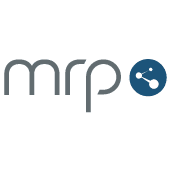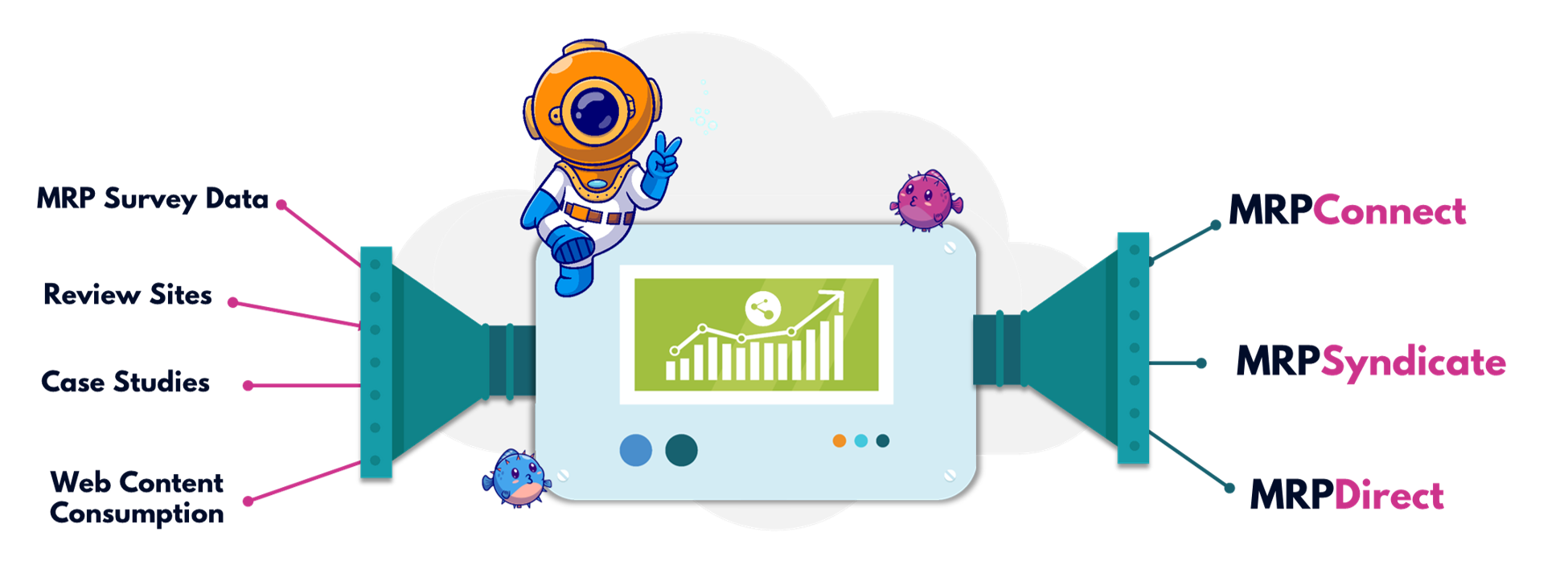What is Account Intelligence? A Complete Guide

MRP Global Marketing Team

Do your marketing and sales efforts frequently feel like a guessing game? Do you wish you had crystal-clear guidance on which accounts to prioritize? How soon? And who should you speak with?
Discover account intelligence now if you answered “yes” to these questions.
Account Intelligence links your static company data with third-party data and behavioral insights. It gives you straightforward, implementable insights for creating account-based marketing (ABM) campaigns and sales movements that fill your pipeline and generate sales. The time of relying on segregated data is over!
This guide will teach you everything you need to know about account intelligence, including its components, uses, and acquisition methods. It will enable you to start pursuing the correct accounts and completing deals more quickly, effectively, and frequently.
What is Account Intelligence?
Account intelligence, or account-based intelligence, collects first- and third-party B2B data. Artificial intelligence transforms it into insights to help your marketing and sales teams better understand accounts and leads, develop targeted pitches, and turn promising prospects into devoted customers. The data should be precise and reliable to assist your team in understanding who your target customers are, what they’re looking for, when they’re ready to buy, and what products or services they’re interested in.
Account intelligence is crucial to helping you strategically target your most valued accounts with tailored messages and products when developing ABM campaigns and organizing your sales outreach. Without account intelligence, your campaigns and sales strategy would probably rely more on educated guesses, and the ROI will reflect that.
In light of this definition, you must understand the account intelligence’s components to participate.
Components of Account Intelligence
Account Intelligence integrates first- and third-party data into one comprehensive category to help you find the most suitable accounts.
First-party data
The information you gather through your platforms and systems is first-party data. In account intelligence, there are seven different categories of first-party data, including:
Customer Relationship Management (CRM) data: This contains contact information for customers and prospective customers, orders placed with your business, usage, performance, and business opportunities.
Marketing Automation Platform (MAP) data: Your MAP tracking software monitors online activities, including email opens, clicks, and campaign reactions.
Corporate email and calendar data: This data has a wealth of insightful encounters, like email conversations and new connections.
Sales engagement data: Every conversation between your sales team and a potential customer occurs in sales enablement and engagement platforms.
Website traffic data: You most certainly have a lot of this data, and for it to be useful, you’ll need to deanonymize it because it’s presumably hiding a lot of anonymous users.
Connections data: This data type includes relationship networks that compile personal, social, professional, and alumni contacts so you can turn cold calls into friendly introductions.
Chat data: This data comprises all of the conversational marketing you’ve conducted using web chat tools during client or prospect meetings, which effectively captured crucial queries and concerns.
First-party data is essential, but it only partially explains the needs of current and potential customers. Third-party data can be helpful in this situation.
Third-party data
You can learn additional information and fill in gaps by combining your first-party data with third-party insights, taking the guesswork out of engagement. There are eight categories of third-party data that many B2B marketers and sellers overlook:
Company firmographic data: This data, which can be challenging to hunt at times, includes an account’s annual revenue, employee count, industry, location, and other information.
Hierarchy and grouping data: Is your target account a subsidiary of a larger corporation? How is the company structure set up? You can use this information to identify various entrance points and chances to cross and upsell your goods and services.
Contact data: This data should be acquired from privacy-compliant data sources and includes the names, functions, job levels, titles, demographics, locations, social networks, email addresses, and phone numbers of key decision-makers at target accounts.
Intent data: This data tracks online content consumption by using artificial intelligence. This is done to find areas where businesses are particularly interested and, most critically, to determine when an account is in-market.
Technographic data: This data reveals the hardware and software applications your clients’ existing platforms are made up of, allowing you to pitch your solutions and enhance or supplement their existing infrastructures.
Account identification (ID): Account ID allows you to recognize anonymous website users to find out who is visiting without asking them to fill out a form.
News and social insights: You can personalize your solution and approach if you know the recent events that have affected your accounts, such as mergers, fundraising rounds, introducing new goods, etc. Social media material may give you timely and pertinent information about your target accounts, enabling you to connect with them on a more relevant and intimate level.
Advertising data: Your advertising data includes impressions, clicks, and others.
As you can see, third-party insights enhance your static account data across channels and time by adding a dynamic, behavioral, and contextual layer, ensuring account Intelligence is constantly highly relevant and usable.
Example of Account Intelligence In Action
Account intelligence can be used in various ways throughout the buyer’s journey. Account Intelligence can assist you in deciding when to engage with a prospect and what to say, from when the prospect is aware of your firm to when your salesperson closes the transaction – and beyond.
Finding anonymous accounts that visit your website is a classic example of account intelligence in action. Account Intelligence uses artificial intelligence and machine learning to identify users who come to your website via search engines, match that information to their behavioral data to determine how engaged they are, and then run predictive analytics, which help you decide what to do next.
This information is typically impossible to track and analyze manually, so account intelligence is so important.
How to use Account Intelligence
Account intelligence is advantageous for your whole revenue team, which consists of marketing, business development representatives, sales, customer success teams, and revenue ops. Here are some of the main benefits of using account intelligence:
Identify more accounts within your ideal customer profile (ICP)
Are your best accounts in a particular size range and location? Do they work in specific fields? Do they employ certain technologies? You can utilize account intelligence to locate additional accounts that meet the same criteria after you are aware of the traits of your greatest clients. If they demonstrate intent or high engagement, they become one of your top priority accounts under your ideal customer profile (ICP).
Create compelling, personalized experiences
Customers don’t buy things from you. They purchase remedies for their problems. To engage your ICP at crucial touchpoints during the buyer journey, account intelligence helps cut through the B2B noise. How can you help them with their issues? The more dynamic information you have about your accounts, the simpler it is to customize your messaging with personalized adverts and web visits or with tailored sales outreach.
Know when to engage
Traditional marketing frequently depends on educated guesses, leaving your team in the dark about which prospects are most likely to purchase today and which accounts you should nurture for a future purchase. However, account intelligence forbids speculation. With it, your sales force can predict when to approach potential clients.
Head off competitive steals
With account intelligence, you can beat the competition by knowing which businesses are looking at your solutions or technologies. Get alerts and in-depth information on the answers an in-market account looks into.
Close more deals
Account Intelligence unifies sales and marketing teams by offering a single picture of each account, what matters to them, and where they are in the buyer journey. Your sales development representatives (SDRs), account executives (AEs), and marketers may cultivate prospects and existing clients from many touchpoints and progress them through the buyer’s journey by providing them with account intelligence.
MRP Account Intelligence- How is it Different?
MRP Account Intelligence has completely changed how businesses can use data from many linguistic contexts to their advantage. Our account intelligence offers priceless insights that help organizations make wise decisions and stimulate growth on a global scale with a complete strategy that spans linguistic barriers. It has the following features:

Global Engagement, Multilingual Expertise
One of MRP account intelligence’s unique capabilities is its global ability to record engagement triggers, covering at least 20 different languages. We aim to increase this linguistic coverage to over 100 languages. This vast range of language coverage allows enterprises to take advantage of opportunities and markets worldwide, regardless of language barriers.
NLP-Powered Insights
MRP account intelligence uses Natural Language Processing (NLP) to monitor and catalog interaction triggers frequently missed by vendors who only speak English. This possibility is revolutionary for businesses looking to reach a variety of customer bases. We provide a distinctive and essential perspective by finding and analyzing engagement triggers in regional languages, ensuring that companies do not overlook essential possibilities and possible revenue streams.
Localized Communication
MRP elevates engagement to a new level to fully connect with clients. The calling teams at MRP make tens of thousands of calls each month in local languages in areas including EMEA (Europe, Middle East, and Africa) and APAC. Through developing rapport and trust with clients, this localized strategy enables deep conversations that cut across linguistic boundaries.
Market Insights in Native Tongues
Another essential element of MRP’s account intelligence is its email survey engine. To ensure that businesses get information directly from the source, it gathers project planning data in the local languages of the market. For firms to customize their plans for optimum impact, this data is vital for comprehending local market dynamics, preferences, and trends.
Location-Level Intelligence
The capability of MRP to track engagement at the location level is one of its unique features. This means that MRP finds triggers and patterns particular to local markets rather than providing broad worldwide insights. This gives businesses the ability to create marketing plans that are highly targeted and send the appropriate message to the right audience at the right time.
How MRP Uses Deterministic Data?
MRP uses deterministic data to boost client engagement, optimize resource allocation, and deliver focused and efficient marketing efforts. Deterministic data describes exact and reliable information on customer interactions, behaviors, and preferences gathered through numerous channels.
MRP includes the following deterministic data in account intelligence:
- 10 million+ annual calls, used for understanding preferences and opportunities.
- 18 million+ annual emails for segmenting, personalization, and campaign optimization.
- 600k+ annual sends for assessing offline marketing effectiveness.
- 3 million+ interactions for building account profiles and prioritization.
- 9 million+ interactions for tailored communication and identifying decision-makers.
How Does it Work?
The workflow goal of MRP’s account intelligence is to speed up everything from finding new accounts to successfully handing off leads to clients. Let’s explore the operation of MRP’s account intelligence:
- Account Prioritization: Target accounts are first prioritized by MRP Prelytix insights, which utilize powerful analytics and data segmentation tools. These accounts are carefully chosen based on several variables, including vertical, industry, and geography. This vital phase ensures your marketing efforts are concentrated on clients who will most likely produce notable returns.
- Creative Concept Presentation: MRP has an internal innovative team that delivers a complete solution. This internal creative team produces creative concepts after target accounts have been determined. This process ensures that the information and materials are relevant and exciting.
- Client Approval: The client is crucial to the process. The client reviews and approves the list of target accounts and the creative products produced by the innovative team at MRP. This cooperative approach ensures that the client’s and MRP’s objectives are aligned.
- Direct Mail and Printing: The approved creative materials are then forwarded to printing for those clients where direct mail is a successful channel. This process makes sure that professional printed marketing materials are ready for distribution.
- Lead Generation: The lead generation process is at the core of MRP’s account intelligence workflow. To the chosen accounts, the direct mail campaign is sent. Following that, these accounts can reply via conventional or digital channels. They can also decide to self-profile as part of this response, which will provide essential details about their needs, interests, and preferences.
- Requesting a Meeting: Some respondents might indicate a desire for more interaction. MRP’s system makes this possible by allowing customers to set up a meeting. This stage determines the degree of interest and prepares the ground for more in-depth exchanges.
- Meeting Confirmation and Scheduling: A meeting manager is responsible for following up with the interested leads to ensure the engagement process goes successfully. They affirm the enthusiasm and arrange meetings as necessary. Developing the relationship between the prospect and the client depends heavily on this personalized approach.
- Handoff to Client: At this crucial stage, the customer can take control and continue cultivating the relationship with the leads.
The above steps indicate that the account intelligence workflow at MRP is an organized, fluid process that combines data analytics, content creation, client collaboration, and lead generation.
Bottom Line
You have two options for your upcoming ABM campaign.
Invest more money into creating content in the hopes that something will skyrocket. You must get a response from the B2B contact you’ve been emailing for months, right?
On the other hand, use account intelligence to say goodbye to account blindness, omni-spam, and hunch-based selling.
Account Intelligence gives you a high-definition perspective of target accounts. It gives clear insights so you can improve the effectiveness of your advertising and sales activities.
But keep in mind that not every account intelligence platform is created equal. So, without thinking, schedule a meeting with MRP to learn more about our account intelligence.
Read Next…
How to Build a Successful B2B Marketing Funnel
[dssb_sharing_button icon_color="#ffffff" icon_bg="#314A83" _builder_version="4.16" _module_preset="default"...
SDR Outsourcing: Is It Right for Your Business?
[dssb_sharing_button icon_color="#ffffff" icon_bg="#314A83" _builder_version="4.16" _module_preset="default"...
Content Syndication: What it is & How to Get Impactful Results
[dssb_sharing_button icon_color="#ffffff" icon_bg="#314A83" _builder_version="4.16" _module_preset="default"...
